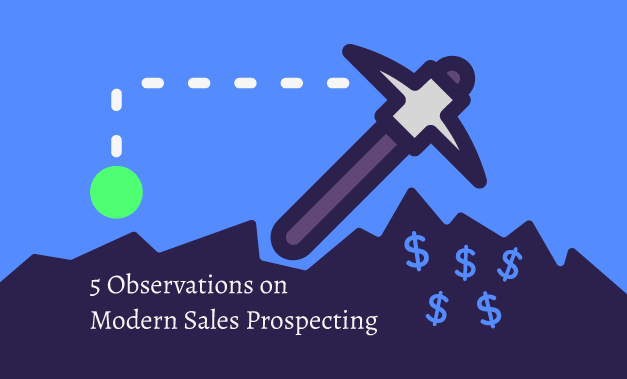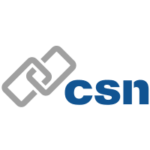No matter what you want to think, or where you are in your sales career, prospecting and cold calling are essential to success in the modern sales process.
I have spent more than ten years making myself a better salesperson and a better leader. I have grown from an account executive to managing a sales team to my current role as founder and CEO of SuccessKit.
In this article, I cover five core modern sales principles that are relevant to anyone who performs, manages, or supports outbound prospecting.
Observation #1: Be sharp and focused.
In my role as CEO of SuccessKit, I have worn a lot of hats. One of the most important hats was making a ton of cold calls to sales and marketing executives to find and close our first ten paying clients. Before this, it had been about six years since my primary focus was on prospecting, and I can definitively say that the job is even harder than it used to be.
Sales reps constantly hammer executive buyers, who get calls about the same things over and over. These buyers know that most junior reps are just pushing to schedule an appointment.
These executives are sophisticated, know all the little tricks, and don’t want to waste time. To get their attention, you need to roll into every single call on point and ready to immediately react to skepticism and distinerest. You have to be extremely sharp to succeed.
Observation #2: Always bring your A game.
You always need to sound credible, know your stuff, and approach your prospects with a specific purpose. But you also need focus, passion, and drive.
When my head wasn’t in the sales game, my calls sucked. All of my experience and former success wouldn’t change that.
I remember a young sales rep that was extremely excited to have his first professional job in sales. Every day, he was energetic and grateful that he could work in an office and have the opportunity to make more money for himself and drive business for the company. His constant smile showed it.
In his first month on the phone, he was still learning and had a lot of gaps in his knowledge. However, he was effective because he made up for it with pure enthusiasm. We have all seen this.
Don’t mistake that to mean anyone can succeed if they just work really hard. The mental toughness to bring your A game over long periods of time is a unique skill in the world of modern sales prospecting.
Observation #3: Prospecting is as important as closing and possibly just as hard.
Prospecting is just as hard and just as important as closing. This is not something I would have said five or six years ago. Back then, I firmly believed that sales development reps (SDRs) doing the prospecting were performing entry-level work. I also thought the account executives (AEs) deserved more compensation because they were the closers.
But you can’t just go through the motions when prospecting. You have to be just as sharp and creative in opening as you do throughout the rest of the sales cycle.
Though running the full sales process is still more difficult overall, the gap is closing. I predict that we will see this reflected SDR/AE comp ratios in the next few years.
Observation #4: Robots will not replace SDRs.
How many times have you seen a headline like “Robots will replace salespeople by 2040”?
A prospect reviews a website or video and determines she’s not interested. A day later, after speaking to a sales rep, the prospect does a complete 180. Now she realizes that the same product solves a major problem for her company. This happens every day, and the power of such a transformation is driven by a human.
Automated or robotic processes are valuable tools for improving the sales process and making it easier. But you can never replace a good sales rep. Sure, some companies will shift more to an automated model. However, for companies selling a medium- to large-ticket solution, technology won’t replace the most effective marketing tool of all time: humans that can connect with and convince other humans to learn about something.
Observation #5: Use but be wary of automated semi-personalized sales approaches.
Companies are using advanced technologies to make more calls, send more semi-personalized e-mails, and otherwise bombard buyers wherever they are.
The sales-tech cavalry has been developed and is becoming mainstream. It’s very difficult to survive in this landscape without it. Ryan Stewman covered this concept well, explaining that good salespeople need to adapt to these automated processes or risk being left behind.
Personally, I worry about this trend. Most of these tools enable people to make more and more approaches to buyers that are more and more tired of receiving calls/emails. I expect to see a major backlash against the automated semi-personalized approach.
Conclusion
High-volume sales approaches frustrate most executives. This is making outbound prospecting increasingly tricky today. The good news: When it comes to modern sales prospecting, you can succeed by being prepared, credible, and human.





























































Everything is clear to me now after reading this blog. Indeed informative and reliable. Thank you for posting this. Great work.